3D Truss Models
-
@pilou said:
You must also think for Multi-languages of your UI !

I've been thinking about adding some global settings so one can set language, defaults and other misc. items.
-
I've addressed a few bugs with the valley set algorithm and tested it in as many configurations and orientations as possible. It it more solid now. I suggest downloading the latest version of 1.1.7 that I just uploaded to the server.
Note that the plane of the main roof that is selected needs to be a rectangular shape at the moment to properly register (1st point selected). I usually just select the top face of one of the top chords of the trusses. The second point should be at the centerline of the last truss of the secondary roof line and at the ridge (peak) of this truss, the third point is also at the ridge (peak) but at a point towards the main roof. I really need to put the manual together to document this feature and how to use it, or at least a video.
I also updated the geometry algorithm slightly so that it adds additional verts a 48" o/c when the valley trusses get too large. This is keeping in line with standard practice on these types of valley sets. I can also make this an input if someone requests that it be such.
This update was not that complicated (valley sets) other than trying to figure out how to place the set based only on a plane and two points. Obtaining this information and then figuring out the math and code to compute the vertical distance between the bottom of the first valley truss where it rests on the main roof plane and the peak of the secondary roof line was the slightly painful part. The actual geometry of the valley set was surprisingly easy to code.
The real challenge will begin when I try to add some hip sets, I may push that out for awhile.
-
Here is an example of a large valley set with a Monopitch Primary Roof and a Common Secondary Roof. Notice the pitch of the monopitch roof is 6:12 while the secondary roof is 12:12.
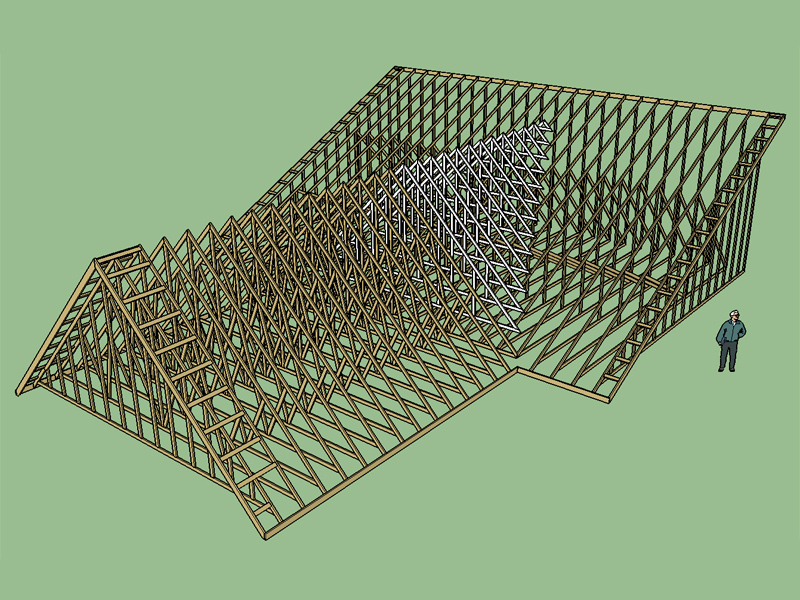
Rather than calculate the overhang for the secondary roof it is just as easy to to trim the truss tails back and adjust the fascia so that it lines up with the fascia of the main roof after the fact.
Even with all the automation of certain tasks there is still a good bit of manual editing required when complex roof lines are involved however I find that SketchUp has a very intuitive interface for trimming solids and once the basic geometry is there the rest is usually not too much trouble.
-
With the main roof sheathing:
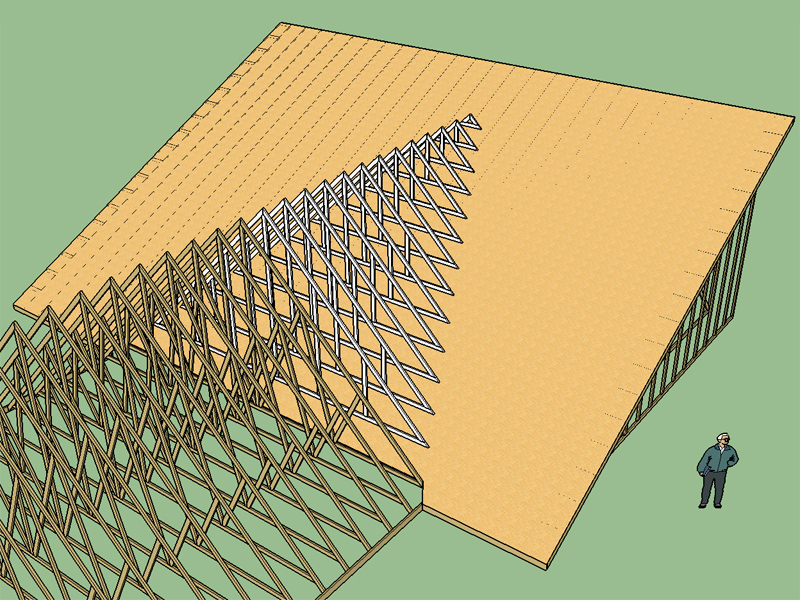
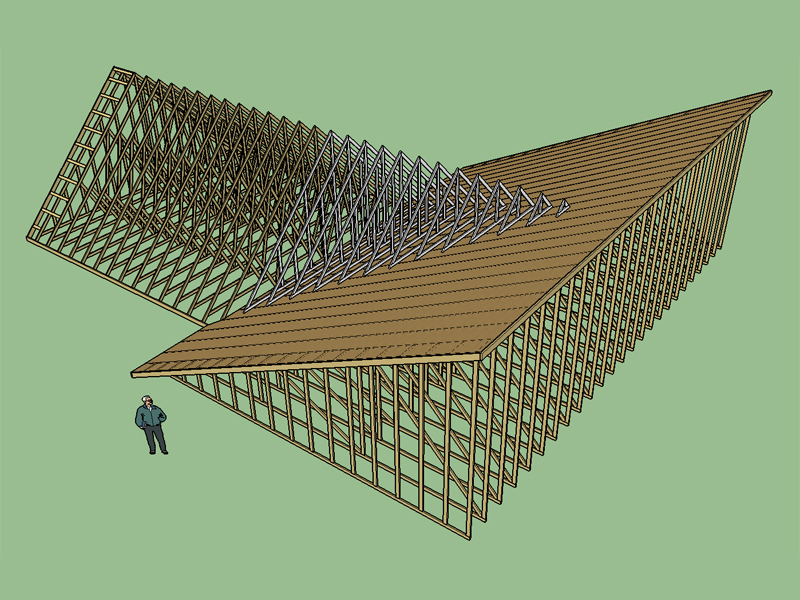
-
I think the most universal is probably to have the manual in PDF?
-
I think I'll create in MS Word and then save it into PDF.
-
This revised code seems to work:
module Medeek_Engineering_Inc_Extensions module MedeekTrussPluginModuleLoader require 'sketchup.rb' require 'extensions.rb' require 'langhandler.rb' # Show the Ruby Console at startup so we can # see any programming errors we may make. # SKETCHUP_CONSOLE.show this_dir=File.dirname(__FILE__) # Fix for ruby 2.0 if this_dir.respond_to?(;force_encoding) this_dir=this_dir.dup.force_encoding("UTF-8") end PATH=this_dir entries=Dir.entries(this_dir) ext=".rbs" # Add a toolbar item to launch our plugin. toolbar = UI;;Toolbar.new "Medeek Truss" cmd = UI;;Command.new("Draw Roof Truss") { Sketchup.load(File.join(this_dir,"MEDEEK_ROOF_TRUSS.rbs")) Medeek_Engineering_Inc_Extensions;;MedeekTrussPlugin;;MedeekMethods.roof_truss_family_menu } cmd.small_icon = "images/mdkplg_tool_icon16_2.png" cmd.large_icon = "images/mdkplg_tool_icon24_2.png" cmd.tooltip = "Medeek Truss" cmd.status_bar_text = "Draw Roof Truss" cmd.menu_text = "Roof Truss" toolbar = toolbar.add_item cmd # toolbar.show cmd2 = UI;;Command.new("Draw Floor Truss") { Sketchup.load(File.join(this_dir,"MEDEEK_FLOOR_TRUSS.rbs")) Medeek_Engineering_Inc_Extensions;;MedeekTrussPlugin;;FloorTruss;;MedeekMethods.floor_truss_family_menu } cmd2.small_icon = "images/mdkplg_tool_icon16_3.png" cmd2.large_icon = "images/mdkplg_tool_icon24_3.png" cmd2.tooltip = "Medeek Truss" cmd2.status_bar_text = "Draw Floor Truss" cmd2.menu_text = "Floor Truss" toolbar = toolbar.add_item cmd2 # toolbar.show cmd3 = UI;;Command.new("Draw Truss Set") { Sketchup.load(File.join(this_dir,"MEDEEK_TRUSS_SET.rbs")) Medeek_Engineering_Inc_Extensions;;MedeekTrussPlugin;;TrussSet;;MedeekMethods.truss_set_family_menu } cmd3.small_icon = "images/mdkplg_tool_icon16_4.png" cmd3.large_icon = "images/mdkplg_tool_icon24_4.png" cmd3.tooltip = "Medeek Truss" cmd3.status_bar_text = "Draw Truss Set" cmd3.menu_text = "Truss Set" toolbar = toolbar.add_item cmd3 # toolbar.show cmd4 = UI;;Command.new("Draw Roof Rafters") { Sketchup.load(File.join(this_dir,"MEDEEK_ROOF_RAFTERS.rbs")) Medeek_Engineering_Inc_Extensions;;MedeekTrussPlugin;;RoofRafters;;MedeekMethods.roof_rafters_family_menu } cmd4.small_icon = "images/mdkplg_tool_icon16_5.png" cmd4.large_icon = "images/mdkplg_tool_icon24_5.png" cmd4.tooltip = "Medeek Truss" cmd4.status_bar_text = "Draw Roof Rafters" cmd4.menu_text = "Roof Rafters" toolbar = toolbar.add_item cmd4 toolbar.show # Add a menu item to launch our plugin. submenu = UI.menu("Plugins").add_submenu("Medeek Truss") submenu.add_item(cmd) submenu.add_item(cmd2) submenu.add_item(cmd3) submenu.add_item(cmd4) end end -
Now the largest file is only about 12,000 lines, a bit more manageable. If I spend some time cleaning it up and compressing redundant sections I can probably get it to half that amount.
-
Up until now I have maintained all of the code in one large file. However I keep adding more features so I need to split it out into multiple files to keep things manageable. My new load .rb file is attempting to use a method I found on another board but I'm getting a situation where the first click on the icon loads the plugin as it should however subsequent clicks on the menu or icon do nothing.
The problem is that after the menu item runs once it will not fire again.
Here is a snippet of the Medeek_Load.rb file :module Medeek_Engineering_Inc_Extensions module MedeekTrussPluginModuleLoader # Show the Ruby Console at startup so we can # see any programming errors we may make. # SKETCHUP_CONSOLE.show this_dir=File.dirname(__FILE__) # Fix for ruby 2.0 if this_dir.respond_to?(:force_encoding) this_dir=this_dir.dup.force_encoding("UTF-8") end PATH=this_dir entries=Dir.entries(this_dir) ext=".rbs" # Add a toolbar item to launch our plugin. toolbar = UI::Toolbar.new "Medeek Truss" cmd = UI::Command.new("Draw Roof Truss") { Sketchup.load(File.join(this_dir,"MEDEEK_ROOF_TRUSS.rbs")) } cmd.small_icon = "images/mdkplg_tool_icon16_2.png" cmd.large_icon = "images/mdkplg_tool_icon24_2.png" cmd.tooltip = "Medeek Truss" cmd.status_bar_text = "Draw Roof Truss" cmd.menu_text = "Roof Truss" toolbar = toolbar.add_item cmd # toolbar.show cmd2 = UI::Command.new("Draw Floor Truss") { Sketchup.load(File.join(this_dir,"MEDEEK_FLOOR_TRUSS.rbs")) } cmd2.small_icon = "images/mdkplg_tool_icon16_3.png" cmd2.large_icon = "images/mdkplg_tool_icon24_3.png" cmd2.tooltip = "Medeek Truss" cmd2.status_bar_text = "Draw Floor Truss" cmd2.menu_text = "Floor Truss" toolbar = toolbar.add_item cmd2 # toolbar.show cmd3 = UI::Command.new("Draw Truss Set") { Sketchup.load(File.join(this_dir,"MEDEEK_TRUSS_SET.rbs")) } cmd3.small_icon = "images/mdkplg_tool_icon16_4.png" cmd3.large_icon = "images/mdkplg_tool_icon24_4.png" cmd3.tooltip = "Medeek Truss" cmd3.status_bar_text = "Draw Truss Set" cmd3.menu_text = "Truss Set" toolbar = toolbar.add_item cmd3 toolbar.show cmd4 = UI::Command.new("Draw Roof Rafters") { Sketchup.load(File.join(this_dir,"MEDEEK_ROOF_RAFTERS.rbs")) } cmd4.small_icon = "images/mdkplg_tool_icon16_5.png" cmd4.large_icon = "images/mdkplg_tool_icon24_5.png" cmd4.tooltip = "Medeek Truss" cmd4.status_bar_text = "Draw Roof Rafters" cmd4.menu_text = "Roof Rafters" toolbar = toolbar.add_item cmd4 toolbar.show # Add a menu item to launch our plugin. submenu = UI.menu("Plugins").add_submenu("Medeek Truss") submenu.add_item("Roof Truss") { Sketchup.load(File.join(this_dir,"MEDEEK_ROOF_TRUSS.rbs")) } submenu.add_item("Floor Truss") { Sketchup.load(File.join(this_dir,"MEDEEK_FLOOR_TRUSS.rbs")) } submenu.add_item("Truss Set") { Sketchup.load(File.join(this_dir,"MEDEEK_TRUSS_SET.rbs")) } submenu.add_item("Roof Rafters") { Sketchup.load(File.join(this_dir,"MEDEEK_ROOF_RAFTERS.rbs")) } end end -
@medeek said:
Now the largest file is only about 12,000 lines, a bit more manageable. If I spend some time cleaning it up and compressing redundant sections I can probably get it to half that amount.
Coding related queries will probably be addressed a lot faster if you post them in the developers section of the forum?
-
Version 1.1.8 - 12.07.2015
- Added Gable Rafter Roof.
- Advanced options enabled for gable rafter roofs (sub-fascia, outlookers, sheathing, and rakeboards).
- New submenu item and toolbar icon added for rafter roof type.
- Plugin divided into multiple files for ease of management.
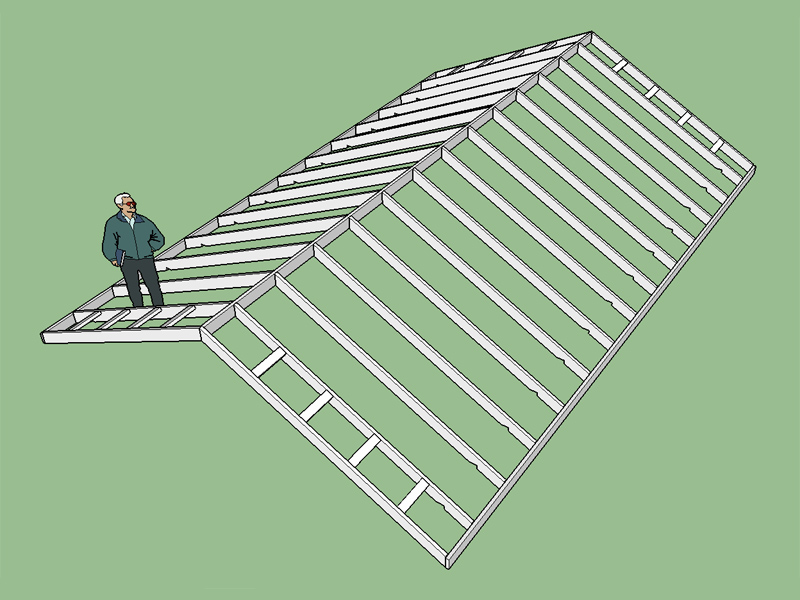
Structural outlookers for this type of a roof are still somewhat of a question. If they are horizontal it makes sense to notch the gable rafter but what if they are vertical?
-
Version 1.1.8 - 12.08.2015
- Structural Outlookers enabled for gable rafter roofs (vertical & horizontal).
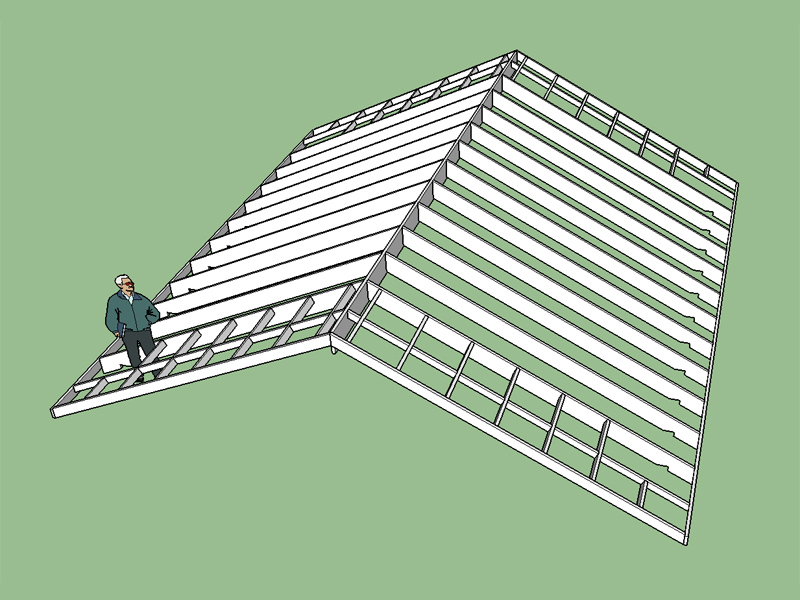
Notice in this case I have left the gable rafter in place but notched clean through it, so essentially it is blocking. However, I have also given the option for removing the gable rafter entirely. You will also notice that the gable rafter is the same depth as the outlookers, when you choose "CUSTOM" for the gable end rafter it allows one to specify the depth of this rafter.
When structural outlookers are used in a vertical orientation it is common practice to have them bear directly on the double top plate of the gable wall (balloon framed to roof). If there is some configuration that is standard in your neck of the woods that I am missing please let me know. I am currently providing three different configurations for the gable end rafters.
I think I am ready to now attack the gable rafter roof with glulam beam.
-
Admittedly the user interface is still very rough around the edges. One thing I've started working on is making the default values assume the last values inputted by the user. The code is fairly simple but updating all of the different menus is tedious because I have quite a few truss types now. This should make creating multiple truss sets in a document even quicker since parameters like roof pitch, overhangs and heel heights are typically the same for a given structure.
To test this functionality currently, download the latest version 1.1.8 and test the common truss types (Imperial Units). I will be updating all menus so that this functionality is present.
-
I'm wondering with my rafter roof if I should provide an option to draw ceiling joists?

-
option to draw ceiling joists? That would be great and a collar tie and ridge tie option. Better still give the option to place them at a given height.
-
Adding in ceiling joists is not a big deal but I don't want to add features that only complicate the plugin and the user experience. I could also make an option to offset the ceiling joist off of the wall top plate for a "raised" ceiling joist.
-
I'm getting ready to add in Glulam beams for rafter roofs. However, as I'm sorting out the details I'm trying to determine what would be the best way of modeling them. I would like to show the different plies but at the same time if someone wants to cut the beam, bevel it etc... I need to have it easily modifiable.
At first I was going to make a component for a single ply and then copy multiple instances. The problem with that idea is a beveled cut would then be difficult to make.
On a slightly different note I am wondering if there are standard metric sizes for Glulam Beams? I am using the 2015 AWC NDS Supplement for the standard US sizes. What similar standard exists for metric sizes?
-
given the differing sizes used (just referencing what is available in South Africa, not to mention globally), it's possibly best to create options for how many laminates and give the sizing for it...
-
The way I'm setting it up is the first menu takes you to an html web dialog (menu) that allows one to select from standard sizes from drop down menus. Then it automatically drops those values into the regular geometry UI were you can manually edit the depth, width and ply thickness of the glulam so the possibilities are infinite and complete customizable.
I like the ability to offer a prompt that gives standard sizes since I feel that is where some of the value comes in my plugin. It saves the designer having to go to the books to look up an actual available size, its all right there at the click of a mouse.
-
Version 1.1.9 - 12.10.2015
- Added Gable Rafter Roof with Glulam Beam (all advanced options enabled).
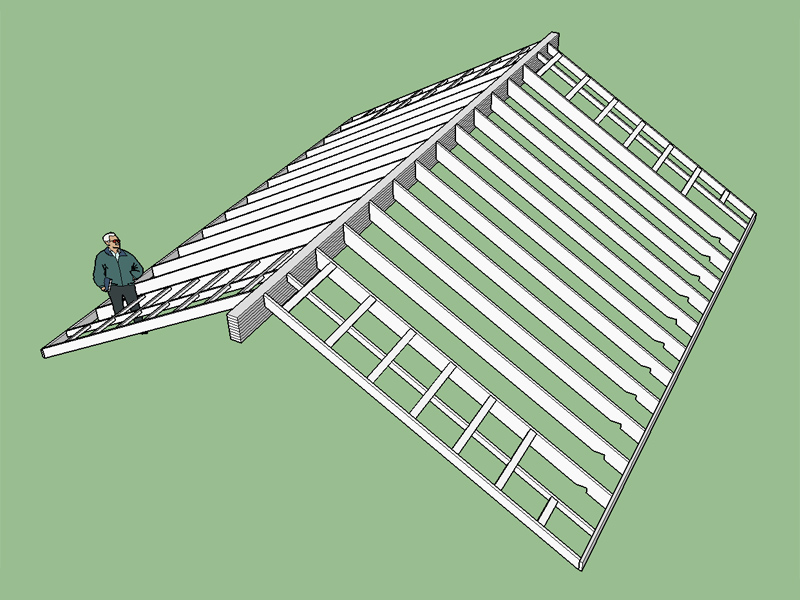
Advertisement







